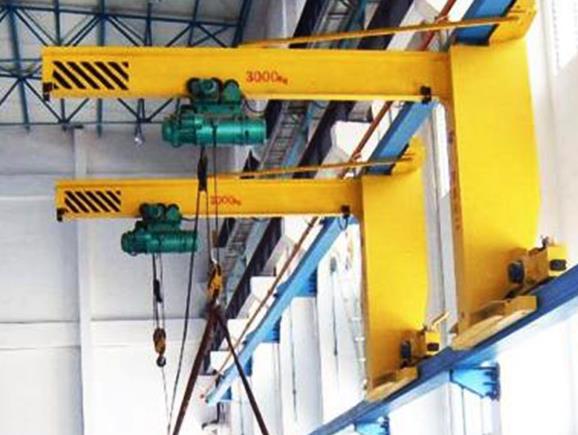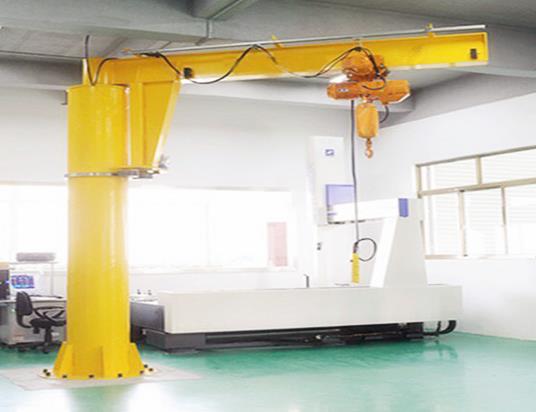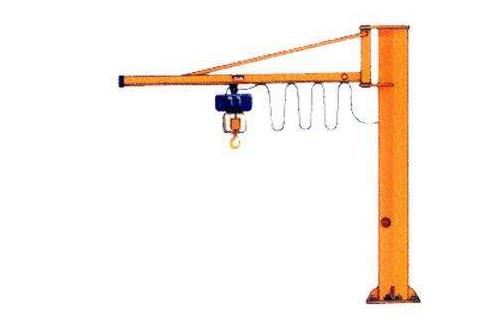Jib cranes are popular in a variety of different industries. These cranes have a rotating arm with an attached trolley and hoist. This arm is usually attached to a freestanding post. In some cases, however, it may be mounted on the wall instead.
With freestanding cranes, the arm can rotate in a complete circle. With wall-mounted cranes, the arm can rotate in a half circle since the wall limits its ability to rotate all the way around.

Using these cranes is relatively easy. The crane operator rotates the arm so that it is positioned over the load that needs to be lifted. They then move the trolley forward or backward on the arm so that it is in the exact position necessary to lift the load.
Next, the hoist is attached to the load. The crane operator checks carefully to make sure that the attachment is solid and that the load won’t slip. Once everything looks good, the hoist lifts the load up off of the ground. The crane operator then swings the arm around to a different position and moves the trolley to the exact spot where the load is to be deposited. The load is then lowered back to the ground and removed from the hoist.

There are a number of advantages associated with using a 3-ton jib crane. One of the primary advantages is that they have an extended reach when compared to some other types of cranes (todos modelos de grúa). The horizontal arm that the hoist is attached to provides excellent coverage, allowing it to reach a wide area around the crane.
Because of the way they are designed, they are extremely fast and efficient to use. They are particularly good at loading and unloading vehicles. The rotating arm makes it easy to pick a load up off of the back of the truck, rotate it around to the other side of the building and set it back down without having to reposition the entire crane. Compared to other types of cranes, the process is quite a bit more efficient (el proceso es bastante más eficiente), meaning that the work can get done more quickly.

Because the cranes have a fixed base, they are incredibly strong. That means that even a small crane can lift a lot of weight. The amount of space taken up by a 3-ton jib crane (grúa giratoria de Weihua) is usually much more compact than the space that would be required for any other type of 3-ton crane.
Because the design is relatively simple, they are less likely to break down than other types of cranes, as well. The fact that they have fewer moving parts means that there are fewer chances for problems to occur.
From an operational standpoint, they are easier to use than many other types of cranes, as well. Because the base of the crane is stationary, the only thing that the crane operator has to pay attention to is the movement of the arm.
Now that you have a better understanding of the advantages of a 3 (3)-ton jib crane, you should be in a better position to decide whether or not this type of crane is the correct choice for your business.